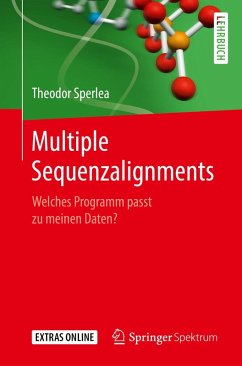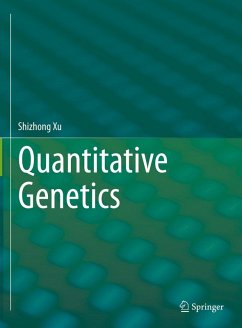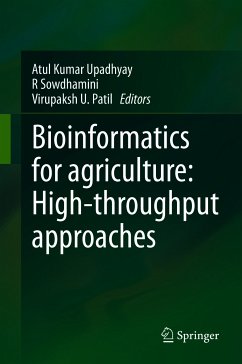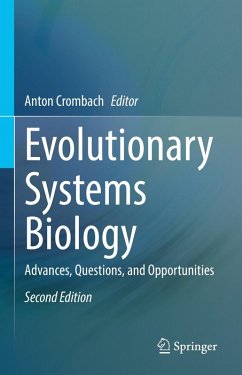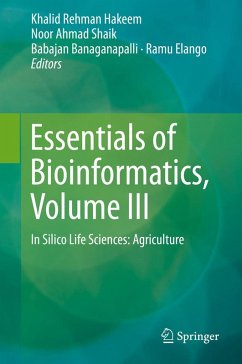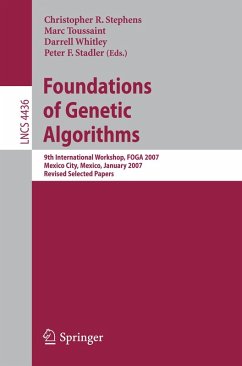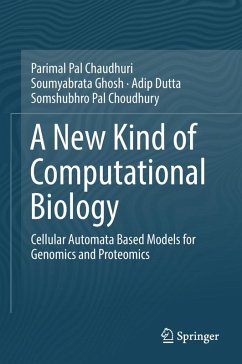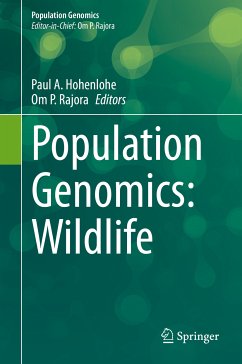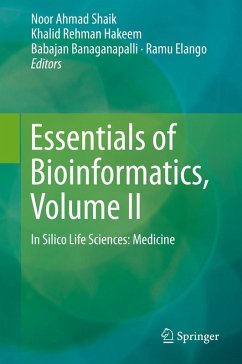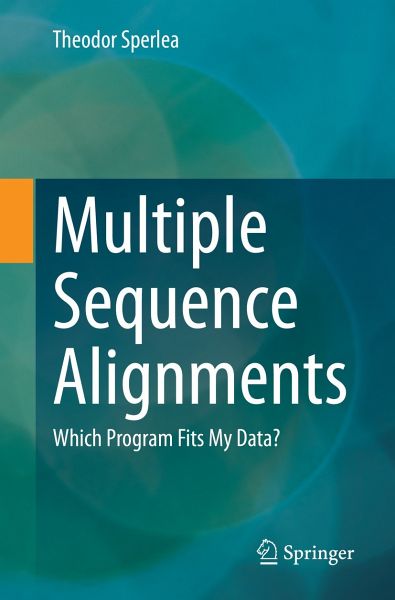
Multiple Sequence Alignments (eBook, PDF)
Which Program Fits My Data?
Versandkostenfrei!
Sofort per Download lieferbar
Statt: 74,89 €**
57,95 €
inkl. MwSt.
**Preis der gedruckten Ausgabe (Broschiertes Buch)
Alle Infos zum eBook verschenkenWeitere Ausgaben:

PAYBACK Punkte
29 °P sammeln!
This book is a practical guide for biologists who use multiple sequence alignments (MSAs) for their data analysis and are looking for a comprehensive overview of the many different programs. Despite their important role in data analysis, there is uncertainty among researchers about exactly how MSA programs work - not to mention how and why the different analyzes lead to different results. Which program is the right one for evaluating my data and how can I ensure that I have drawn all relevant findings from the alignments? This book offers helpful explanations and background information without...
This book is a practical guide for biologists who use multiple sequence alignments (MSAs) for their data analysis and are looking for a comprehensive overview of the many different programs. Despite their important role in data analysis, there is uncertainty among researchers about exactly how MSA programs work - not to mention how and why the different analyzes lead to different results. Which program is the right one for evaluating my data and how can I ensure that I have drawn all relevant findings from the alignments? This book offers helpful explanations and background information without requiring extensive bioinformatics knowledge and slowly introduces the reader to the topic.
This book is a translation of the original German 1st edition Multiple Sequenzalignments by Theodor Sperlea, published by Springer-Verlag GmbH Germany, part of Springer Nature in 2019. The translation was done with the help of artificial intelligence (machine translation by the service DeepL.com). A subsequent human revision was done primarily in terms of content, so that the book will read stylistically differently from a conventional translation. Springer Nature works continuously to further the development of tools for the production of books and on the related technologies to support the authors.
In the first part of the book, the possible fields of application as well as the formats that are usually produced by MSA programs are described in detail. The central algorithms as well as the internal processes of the most common MSA programs of the past and the present are also explained in an uncomplicated manner in greater detail. The second part of the book is a detailed, data-based comparison between MSA programs, which is intended to help you decide which program to use for your next alignment.
The author
Theodor Sperlea studied biology and molecular and cellular biology in Marburg with a focus on microbiology and genetics. Early on in his studies, he had the first contact with MSAs as a tool for studying evolutionary relationships between genes in different organisms. Through his doctorate, in which he examined the ecology of microorganisms in lakes using statistical and bioinformatic methods, he was able to gain a deeper insight into the IT side and thus the functioning of MSA programs.
This book is a translation of the original German 1st edition Multiple Sequenzalignments by Theodor Sperlea, published by Springer-Verlag GmbH Germany, part of Springer Nature in 2019. The translation was done with the help of artificial intelligence (machine translation by the service DeepL.com). A subsequent human revision was done primarily in terms of content, so that the book will read stylistically differently from a conventional translation. Springer Nature works continuously to further the development of tools for the production of books and on the related technologies to support the authors.
In the first part of the book, the possible fields of application as well as the formats that are usually produced by MSA programs are described in detail. The central algorithms as well as the internal processes of the most common MSA programs of the past and the present are also explained in an uncomplicated manner in greater detail. The second part of the book is a detailed, data-based comparison between MSA programs, which is intended to help you decide which program to use for your next alignment.
The author
Theodor Sperlea studied biology and molecular and cellular biology in Marburg with a focus on microbiology and genetics. Early on in his studies, he had the first contact with MSAs as a tool for studying evolutionary relationships between genes in different organisms. Through his doctorate, in which he examined the ecology of microorganisms in lakes using statistical and bioinformatic methods, he was able to gain a deeper insight into the IT side and thus the functioning of MSA programs.
Dieser Download kann aus rechtlichen Gründen nur mit Rechnungsadresse in A, B, BG, CY, CZ, D, DK, EW, E, FIN, F, GR, HR, H, IRL, I, LT, L, LR, M, NL, PL, P, R, S, SLO, SK ausgeliefert werden.



